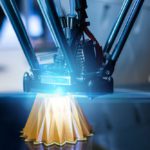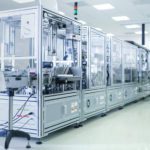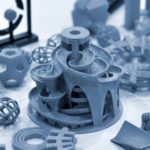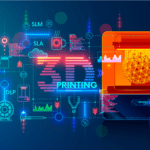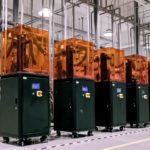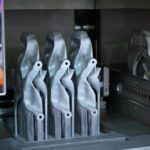Smart Factory Team
Additive Manufacturing Process Overview (With Examples)
3D printing or additive manufacturing is transforming the manufacturing sector. The technology simplifies the manufacturing process by eliminating tooling and enabling production using a wide range of materials. The cost-efficiency…
Read MoreHow Sustainable is Additive Manufacturing with Global Supply Chain Disruptions?
This article will discuss how sustainable additive manufacturing is during the normal supply chain, disrupted supply chain conditions, and what drives this sustainability and resilience.
Read MoreHow an Integrated Smart Factory 3D Rapid Prototyping Service Can Accelerate Manufacturing
Historically, 3D printing has long held a close association with rapid prototyping. When 3D printers first entered the market in the early 1980s, companies primarily used them as rapid prototyping…
Read MoreDLP vs. LCD 3D Printer: Comparison Guide
Advancements in 3D printing, along with product complexity and different types of available processes have made it challenging to select the right 3D printer for high-volume manufacturing. Digital Light Processing (DLP) and LCD are two commonly implemented resin-based 3D printing technologies. The following compares DLP vs. LCD 3D printers, their unique features, and the subtle differences.
Read MoreCNC vs. 3D Printing: Buying, Making, or Outsourcing Machined Jigs and Fixtures
Jigs and fixtures are ubiquitous in the manufacturing world. From aerospace engineering to consumer goods production, jigs and fixtures help companies improve their daily operations. Machinists use jigs to guide…
Read MoreEnvironmental Sustainability of 3D Printing Consumer Goods
Customers are more environmentally aware and place greater value on sustainable consumer goods and businesses that adopt environmentally-friendly manufacturing strategies. Recent advancements in 3D printing polymers with bio-based materials or…
Read MoreUnderstanding Seven Types of Additive Manufacturing
Additive manufacturing, or high-volume 3D printing, utilizes multiple production lines to produce a wide range of products. By opting for a hybrid or fully additive manufacturing approach, companies can transform…
Read MoreRapid Prototyping and Tooling: 3D Printing Speeding up Product Manufacturing
Rapid prototyping with traditional methods requires tooling – just like volume production processes.Tooling slows down and adds cost to product development cycles. 3D printing provides an alternative prototyping production process that removes tooling constraints, giving product designers a flexible, on-demand option for product development and scaling.
Read MoreUnderstanding 3D Printing in Manufacturing
Defined as the construction of a three-dimensional object from a computer-aided design (CAD) or a digital 3D model, 3D printing or additive manufacturing is transforming the world as we know…
Read MoreHigh Volume Manufacturing Process with 3D Printing: Pros and Cons
There are multiple ways to take advantage of 3D printing, such as leveraging a smart factory for on-demand production, augmenting traditional processes, and building dedicated 3D printing lines for an agile manufacturing model. With advantages and disadvantages for each option, companies need to consider several factors when using 3D printing for high-volume manufacturing processes.
Read More
